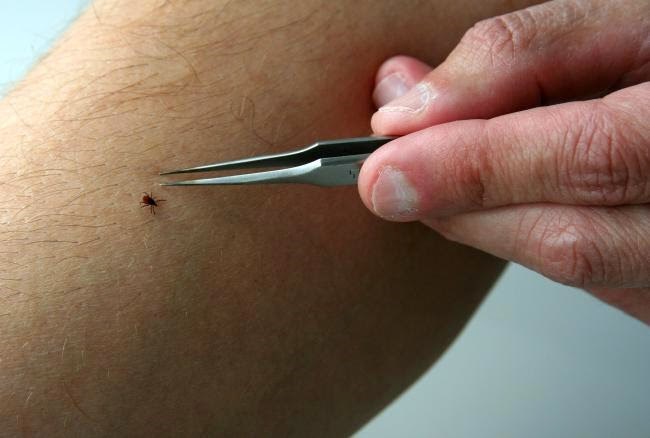We've had just a few days of warm weather but the Simcoe Muskoka District Health Unit is getting daily calls about ticks.
It may seem early in the season but it is really not.
According to Program Coordinator Lori Holmes, "Ticks can show up in early March. Its more about our change in activity than theirs. People are just out more when its warmer but the ticks are always there. They are mostly in long grass near hiking trails, wooded areas and hardwood forests."
While Simcoe Muskoka has many types of ticks the one that causes most concern is the black legged tick (also called deer tick) which is the one responsible for carrying the bacteria that can cause lyme disease.
Lyme Disease is defined as "an inflammatory disease characterized at first by fever, headache, chills and later by arthritis and neurological and cardiac disorders caused by bacteria transmitted by ticks."
Holmes says, "It's important to remove the tick as soon as possible preferably using tweezers. The less time it's attached and feeding the better. Get as close as you can to the head and pull it straight out. Don't twist it or squish it. If the tick is infected, people can present symptoms three to four days post-bite so it's important to see a doctor."
Most people won't know by looking at it what kind it is, so the health unit does encourage people to bring the tick in for identification and possible lab testing.
Holmes explains, "We do conduct surveillance and do tick dragging where we go into the wooded areas and look for them to determine where they are establishing. We do the same for mosquitos and test for West Nile Virus."
The health unit says there is no way to really forecast if it will be a bad year for the pests because it's not specifically linked to temperature.
The best advice according to Holmes is, "Wear long pants and long sleeves when outdoors.Use insect repellent containing deet, and check yourself and others when you go back indoors. Check the scalp, behind the ears, knees and the groin area where you might not readily notice the bugs."
It is basically the same procedure for pets as Holmes advises, "Get it off them as soon as you can, and because animals present differently from people once bitten, take them to the vet to be checked over."
